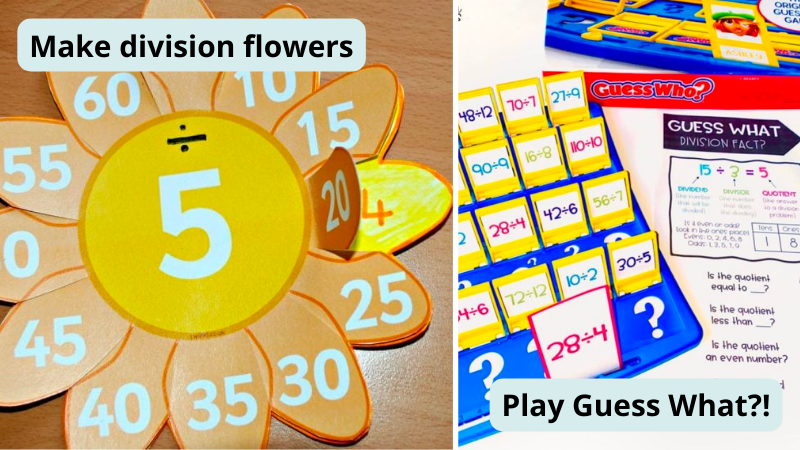Teaching division can be tough, especially when you start tackling larger numbers and long division. These division activities make the process easier. They help kids conceptualize and visualize, driving the concepts home. Plus, they’re a lot of fun!
(Just a heads up, WeAreTeachers may collect a share of sales from the links on this page. We only recommend items our team loves!)
1. Introduce division as sharing

When it comes down to it, isn’t division really just sharing? Play this simple game where kids roll dice and share out pom-pom cherries as equally as possible. It’s a great start to teaching division.
Learn more: JDaniel4’s Mom
2. Continue teaching division by reading a book or two
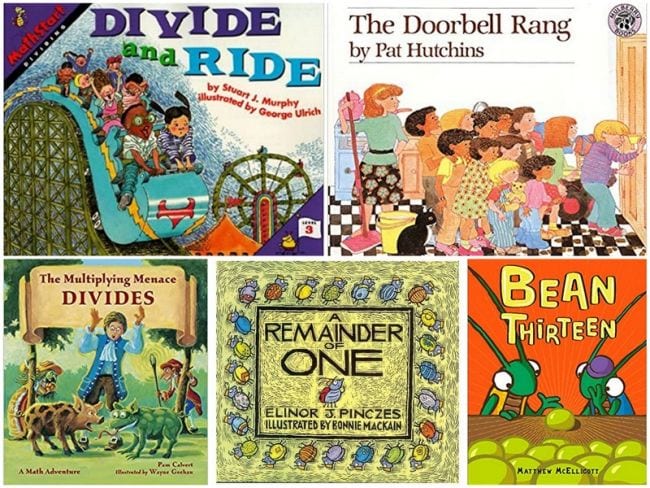
Kids are never too old for story time. These clever books are the perfect jumping-off point for teaching division, especially if you have kids use counters like pom-poms to act out the story as you go.
- Divide and Ride (Murphy/Ulrich)
- The Doorbell Rang (Hutchins)
- The Multiplying Menace Divides (Calvert/Geehan)
- A Remainder of One (Pinczes/MacKain)
- Bean Thirteen (McElligott)
3. Make a model

Understanding division is much easier when you lay it out as a model first. Kids break numbers into even groups, then write out the number sentence they represent.
Learn more: Tunstall’s Teaching Tidbits
4. Make division anchor charts to support learning

Keep anchor charts handy while you’re teaching division to give students an easy reference when they struggle. Use these charts for inspiration:
- Tricks to Learn Division Vocabulary, The Owl Teacher
- Divisibility Rules, My Math Resources
- Long Division with Sticky Notes, Caffeine Queen Teacher
- Division Strategies, Room 330 Anchor Charts
5. Teach the Divisibility Rules

These tricks make dividing bigger numbers so much easier. Grab a free printable to share with students at the link.
Learn more: Homeschool Giveaways
6. Turn Guess Who? into Guess What?
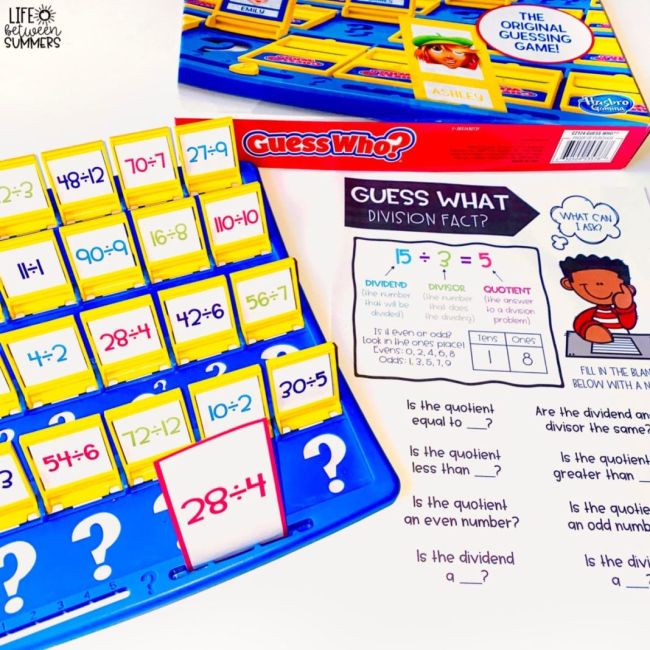
Pick up an old Guess Who? game at the thrift store and repurpose it to make a totally fun way to practice division facts!
Learn more: Life Between Summers
7. Practice division facts with Wrap-Ups
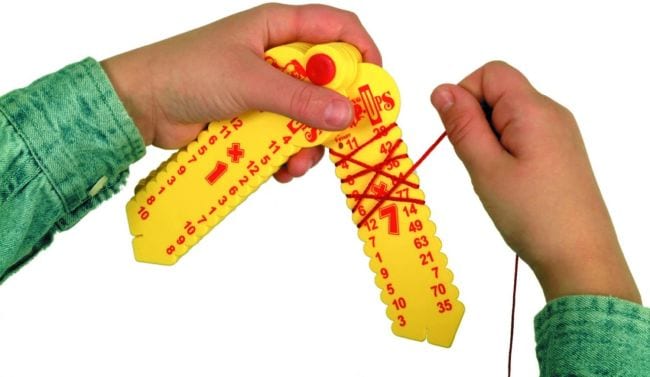
This division game is a fun alternative to flashcards. Kids wrap yarn around the cards from the problem on the left to the answer on the right. Then they flip over the card to see if they’re right. Buy Learning Wrap Ups Division Keys here.
8. Try teaching division with LEGO bricks
Check out this video for an easy way to introduce division concepts to your students using perennially popular LEGO bricks. (Get more LEGO math ideas here.)
9. Sort jelly beans into an egg carton
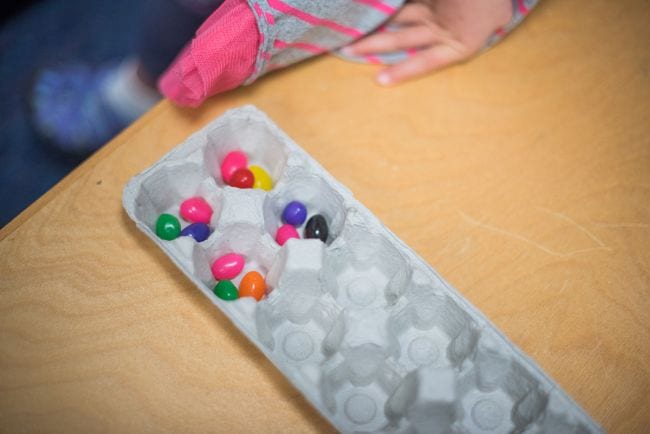
As you pave the way for understanding division, try activities where kids divide large groups of objects into smaller equal groups. Sorting jelly beans into an egg carton is one great way to do this.
Learn more: Homeschool Blog
10. Learn with licorice strings and Skittles
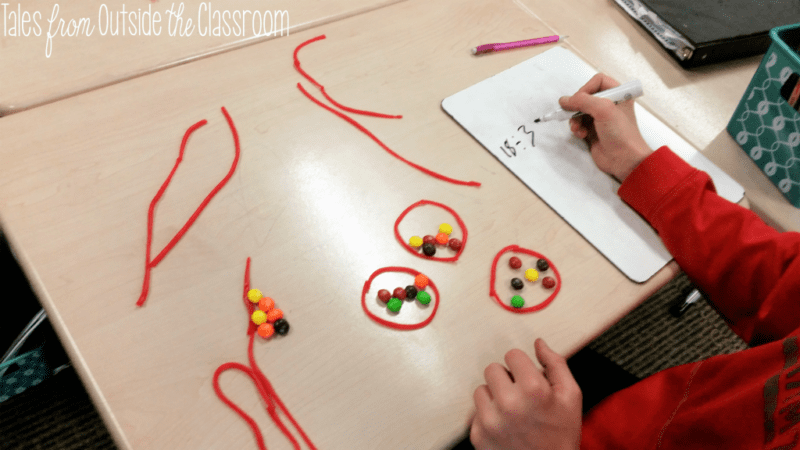
Kids always love math games that you can eat at the end! Pass out licorice strings and a bowlful of Skittles, and use them for a lesson on division.
Learn more: Tales from Outside the Classroom
11. Work on different division strategies
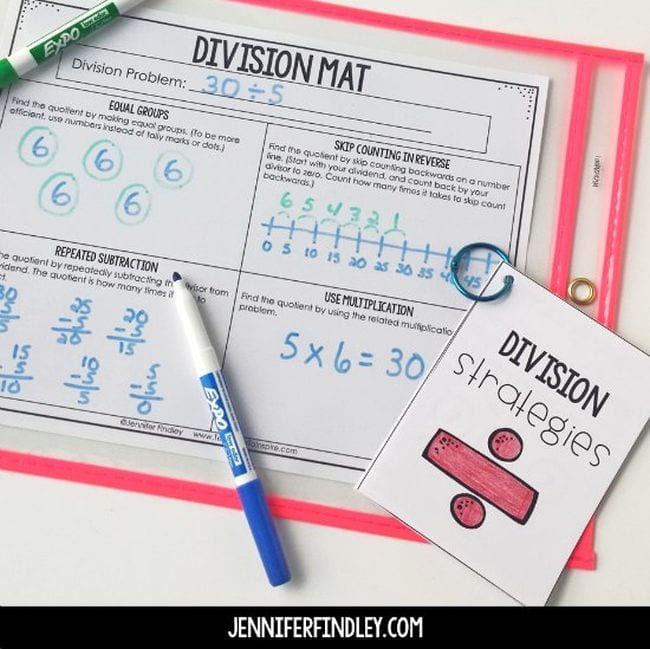
For kids who really struggle with the concept, try teaching division strategies using this free printable mat. It gives them a variety of ways to tackle division problems.
Learn more: Teaching With Jennifer Findley
12. Batter up for division facts
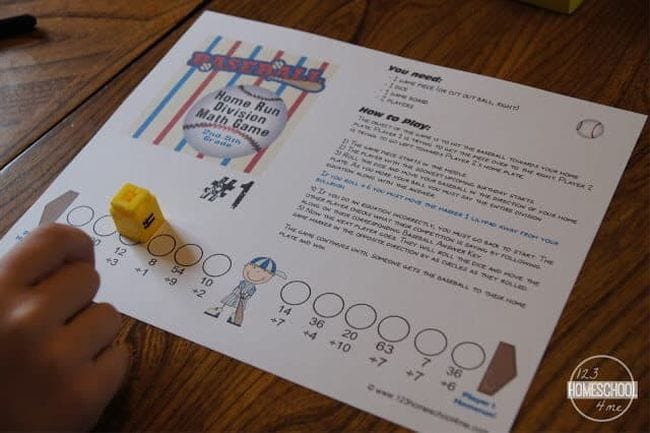
Calling all sports fans! Grab this free printable baseball division game and roll the dice as you compete to see who can hit a home run.
Learn more: 123Homeschool4Me/Baseball Division Game
13. Make division flower learning aids

An important part of learning to divide is mastering the basic division facts. These cute flowers give kids a colorful way to quiz themselves.
Learn more: Ofamily Learning Together
14. Put together Popsicle puzzles

Snag these free printable Popsicle puzzles at the link below to give kids another fun way to practice their division facts. (Plus, find more ways to use wood craft sticks in the classroom here.)
Learn more: 123Homeschool4Me/Popsicle Puzzles
15. Go Fish for division facts

Give “Go Fish” a division spin! Instead of looking for matching pairs, players compete to find pairs of cards that divide evenly into each other. For instance, in the hand shown, the player could lay down the 8 and the 2, because they divide to make 4.
Learn more: Cuppa Cocoa
16. Win the division facts race
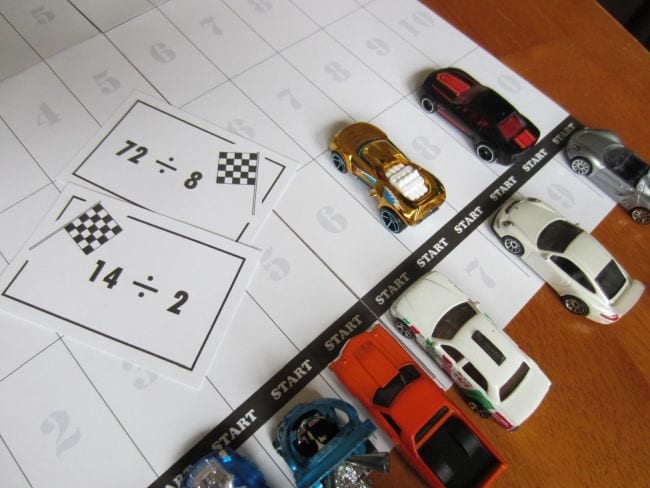
If you’ve got a bin full of toy cars, this division practice game is for you. Grab the free printables and learn how to play at the link.
Learn more: Deceptively Educational
17. Assemble division star puzzles

These pretty star puzzles are deceptively tricky! Think of them as dominoes for division. Get a free full printable set at the link.
Learn more: Hojo’s Teaching Adventures
18. Fight the division dragon
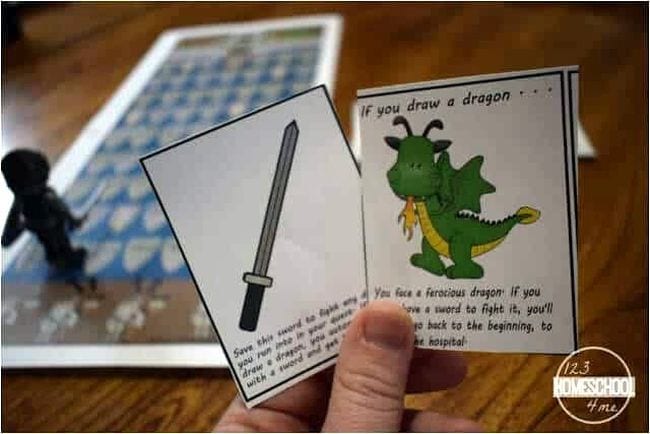
Sharpen your sword and get ready to complete The Knight’s Quest! This free printable game is another engaging way to practice your division facts.
Learn more: 123Homeschool4Me/Division Dragon
19. Take a turn at Jenga

It’s so fun to use Jenga in the classroom! Create a set of division facts flashcards using colored paper that matches the Jenga block colors. Kids choose a card, answer the question, and then try to remove a block of that color from the stack.
Learn more: Life Between Summers
20. Play a monster board game

Grab this free printable board to give your students practice dividing by threes. If you like it, the rest are available for purchase.
Learn more: Teacher’s Takeout
21. Roll and write number sentences

Dice are a terrific tool for teaching division number sentences. Kids simply roll two dice, then write the multiplication and division number sentences for them. (Tip: Try using dice-in-dice to up the fun factor. Here are other fun dice-in-dice activities too!)
Learn more: Math Geek Mama/Number Sentences
22. Write the room to practice division facts
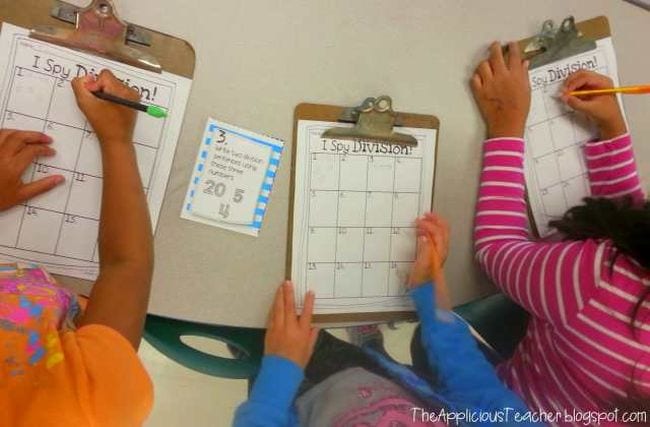
Write the room activities get kids up and moving, which is terrific for learning. Hang these free printable cards around the room, then give kids a clipboard and answer sheet and send them off to find and solve the division facts.
Learn more: The Applicious Teacher
23. Solve a division puzzle square
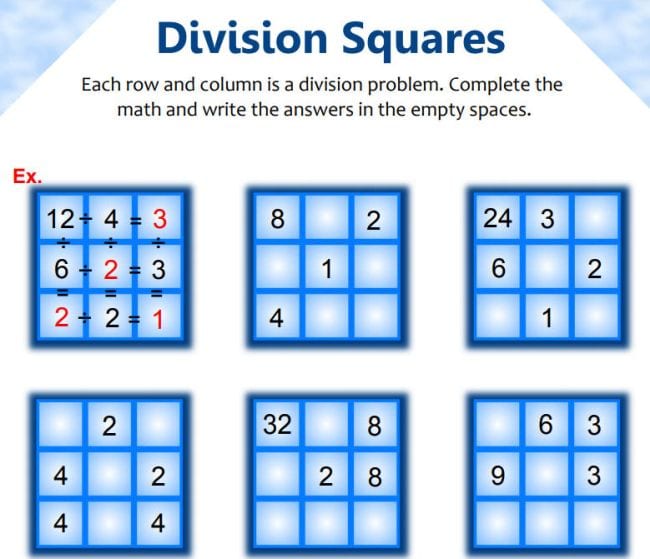
These puzzling squares challenge kids to fill in the correct numbers as they try to create a division problem that works in every direction. Grab the printable at the link.
Learn more: Education.com/Puzzle Squares
24. Spin and divide
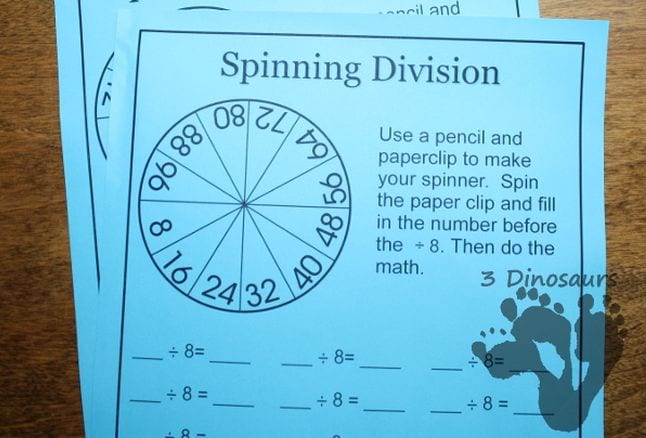
These free printables offer another way to practice division facts. Use a pencil and paperclip to make the spinner.
Learn more: 3 Dinosaurs
25. Draw Equation Maker games

In the first block, write a series of dividends. Write divisors in the second block and quotients in the third. Kids use markers to cover the numbers that make up a correct equation.
Learn more: Fun Games 4 Learning
26. Solve using the Does McDonald’s Serve Burgers? method

As you start to tackle long division, there are a variety of methods you can use. One popular option is this one, which gives kids a way to remember the steps: divide, multiply, subtract, and bring down.
Learn more: Brittany Noll-Cooper/Pinterest
27. Keep things in line with graph paper

This is such an easy accommodation you can make for kids who have difficulty keeping their columns straight. Simply have them lay the problems out on graph paper. (No graph paper? Turn a sheet of notebook paper sideways and use the lines to make columns.)
Learn more: Caffeine Queen Teacher/Graph Paper
28. Lay out playing cards for long division
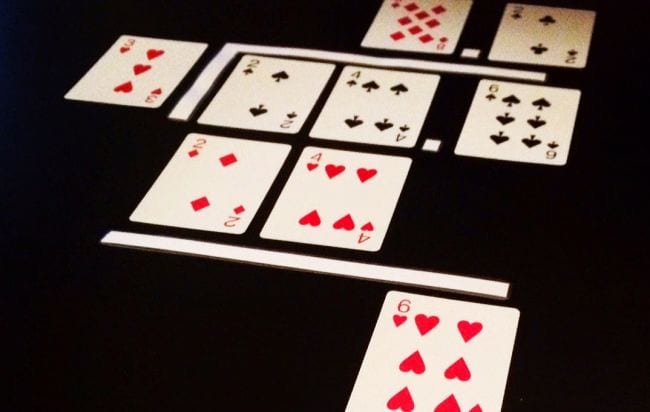
Here’s a fun, hands-on long division game that uses a deck of playing cards. You can start out with equations that don’t require remainders, then get more complicated as kids progress.
Learn more: Middle School Math Man
29. Work on division facts with triangle cards
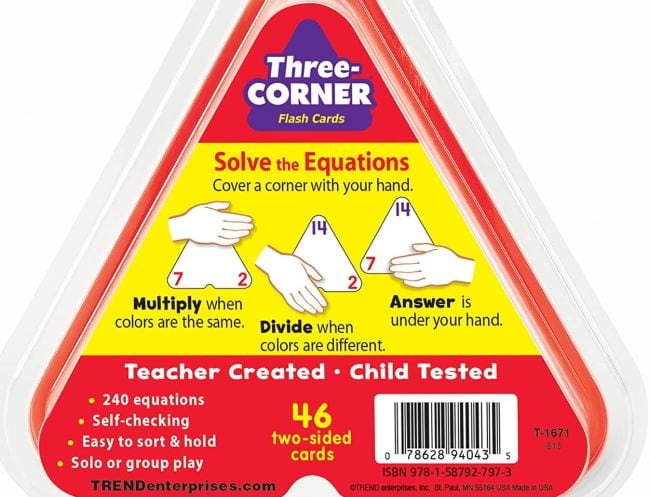
Triangle flashcards are a simple tool for teaching division and multiplication. You cover one corner with your hand, then divide if the colors don’t match or multiply if they’re the same. You can make a set of your own, or buy them on Amazon here.
30. Go on a treasure hunt

Everything is a little more fun with a treasure map! Students solve the equations and cross off the answers until only one number is left—X marks the spot!
Learn more: Education.com/Treasure Hunt
31. Use the Herding Game for teaching division with remainders
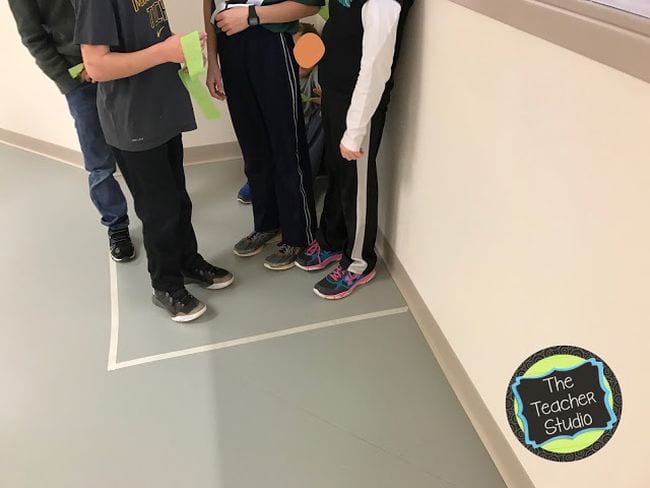
Just when kids think they have division all figured out, along come remainders! Teaching division with remainders can be one of the trickiest tasks, so start by playing this fun and active game. For each round, the teacher calls out different groups of animals for students to form (“Form herds of 5 elephants!”). Any leftover students who don’t fit into the group go into the “holding pen,” introducing the idea of remainders.
Learn more: The Teacher Studio/The Herding Game
32. See remainders in real life with cookies
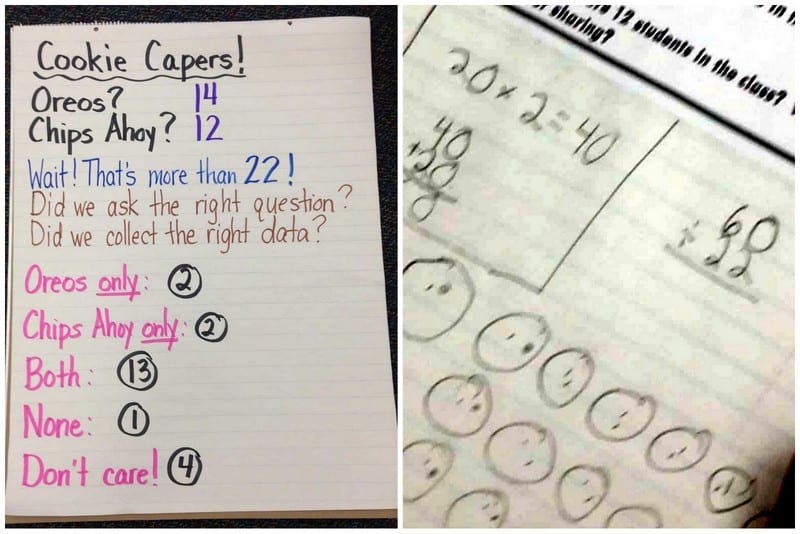
Buy a couple of bags of cookies and ask your class to find the best way to divide them up fairly. Consider whether remainder cookies can be divided to add fractions into the mix. Now that’s some delicious math!
Learn more: The Teacher Studio/Division Cookies
33. Turn remainders into a good thing
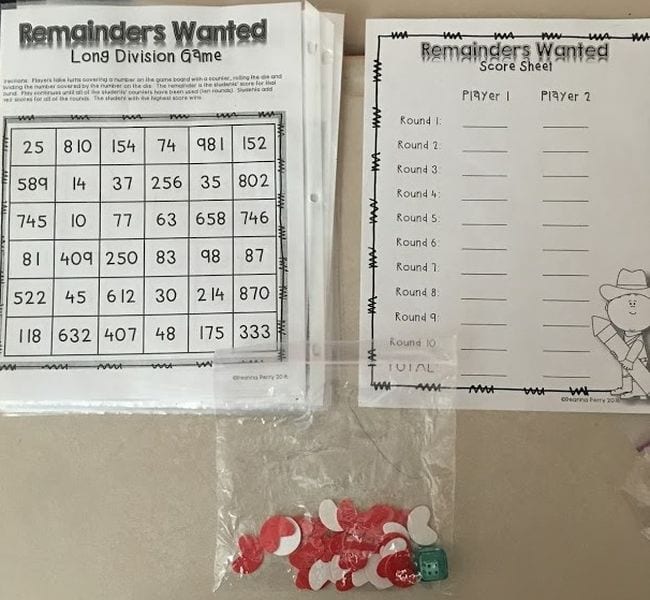
Make teaching remainders more fun with this game that turns them into the most wanted! The goal for each round is to wind up with the highest reminder. You’ll need dice, counters, and the free printable game sheets you can find at the link.
Learn more: Teacher Scout Mom
34. Learn to play Damult Dice Division

Grab three dice and a pencil and paper for this strategy game, named after the teacher who invented it. Roll three dice, and determine the division problem that gives you the highest possible quotient (rounded to the nearest whole number). You get 10 bonus points if there’s no remainder!
Learn more: Math for Love
35. Check your work
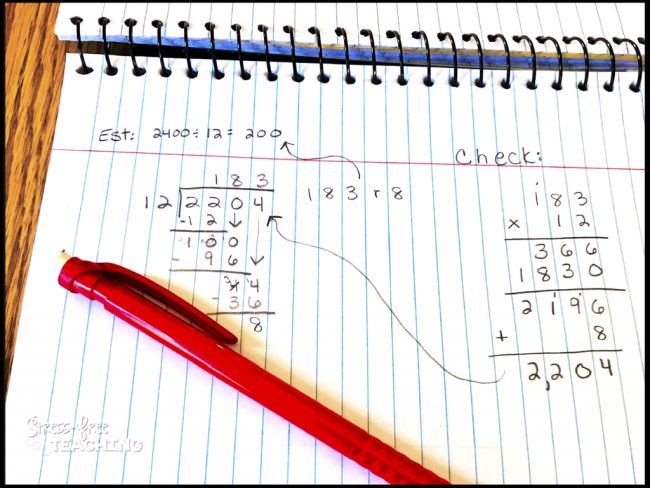
This might seem obvious, but teach your kids to check their work by multiplying it back out again. Add in remainders at the end, and you should get the same numbers all over again.
Learn more: Stress-Free Teaching
36. Create a division house
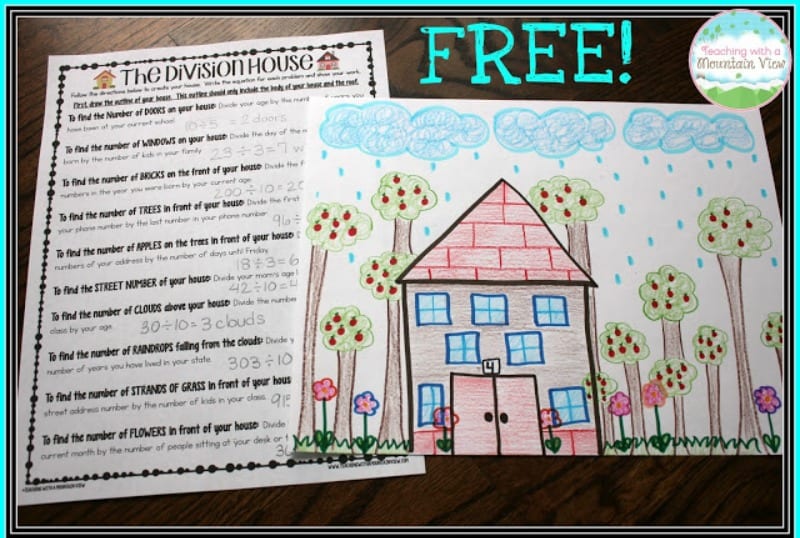
This is such a creative way of teaching division! Kids answer a series of questions to determine the specifications of their “division house.” For instance, to determine the number of windows in the house, students must divide the day of the month they were born by the number of kids in their family. When they’re done with the math, it’s time to draw their house!
Learn more: Teaching With a Mountain View
37. Batter up for long division baseball

This long division game requires a little strategy, as kids roll dice and try to create problems that give them the highest possible quotient on each turn. Wrong answers count as a strike, so be careful! Learn how to play and get the free printables at the link.
Learn More: You’ve Got This Math
38. Adopt and care for pets

Add this super cute game to your rainy-day closet, and kids will learn and practice division without even realizing it! Get it from Amazon here.
39. Pass out play money to make teaching division meaningful

Money activities always grab kids’ attention because they know they can use them someday in the real world. Pull out your stack of play money and learn how to use it for teaching division at the link.
Learn more: Shut the Door and Teach
40. Use Bingo for teaching division as fractions
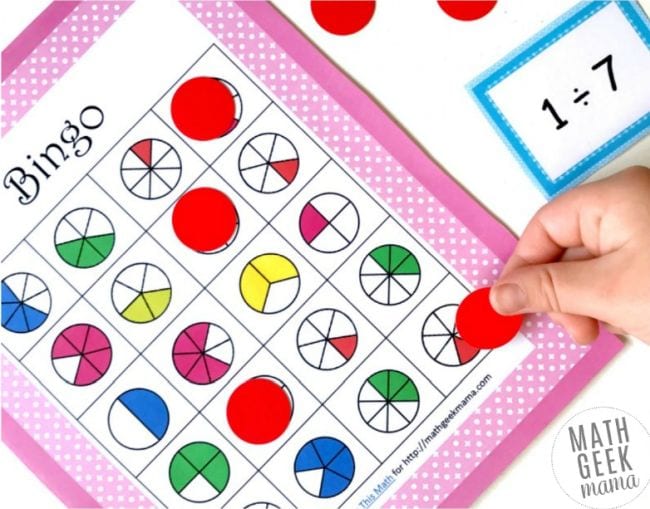
Division and fractions go hand in hand. This free printable Bingo game helps kids understand the connection between the two.
Learn more: Math Geek Mama/Division Bingo
Love these division activities? You’ll want to check out our roundup of multiplication activities too.
Plus, find out how other teachers tackle multiplication and ask for advice on the WeAreTeachers HELPLINE group on Facebook.

